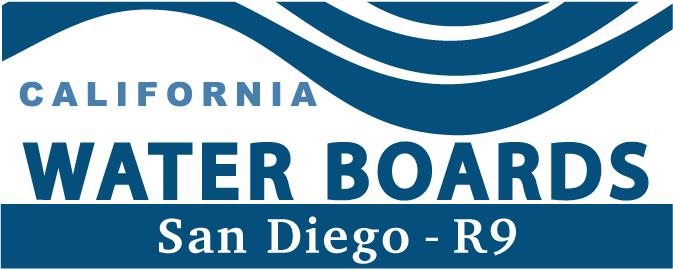Revised Total Maximum Daily Loads for Indicator Bacteria, Project I – Twenty Beaches and Creeks in the San Diego Region (Including Tecolote Creek)
Introduction
On February 10, 2010 the San Diego Water Board adopted Resolution No. R9-2010-0001, an Amendment to the Water Quality Control Plan for the San Diego Region to Incorporate the Revised Total Maximum Daily Loads for Indicator Bacteria, Project I - Twenty Beaches and Creeks in the San Diego Region (Including Tecolote Creek). This TMDL Basin Plan amendment was subsequently approved by the State Water Resources Control Board on December 14, 2010, the Office of Administrative Law (OAL) on April 4, 2011, and the United States Environmental Protection Agency (USEPA) on June 22, 2011. Under state law, this TMDL Basin Plan Amendment became fully effective on April 4, 2011, the date of OAL approval.
Adoption of these TMDLs meets the requirements of Clean Water Act section 303(d). The Basin Plan amendment process is authorized under Water Code section 13240 and is subject to the California Environmental Quality Act (CEQA).
Background
Fecal bacteria originate from the intestinal biota of warm-blooded animals, and their presence in surface water is used as an indicator of human pathogens. Pathogens can cause illness in recreational water users. Bacteria have been historically used as indicators of human pathogens because they are much easier and less costly to measure than the pathogens themselves.
According to section 303(d)(1)(A), "Each state shall identify those waters within its boundaries for which the effluent limitations…are not stringent enough to implement any water quality standard (WQS) applicable to such waters." The Clean Water Act also requires states to establish a priority ranking of Water Quality Limited Segments and to establish Total Maximum Daily Loads (TMDLs) for such waters. The purpose of a TMDL is to restore and protect the beneficial uses of an impaired waterbody. A TMDL is defined as the sum of the individual wasteload allocations (WLAs) for point sources and load allocations (LAs) for nonpoint sources and natural background. TMDLs must be established at levels necessary to attain and maintain the applicable narrative and numerical water quality standards with seasonal variations and a margin of safety which takes into account any lack of knowledge between effluent limitations and water quality. In summary, a TMDL represents a strategy to restore an impaired waterbody so the water quality can once again meet applicable water quality standards.
In late 2003, when this project was first initiated, the 2002 Clean Water Act Section 303(d) List of Water Quality Limited Segments (CWA section 303(d) List) indicated that the most common cause of impairments to waters in the San Diego Region was elevated bacteria levels. Accordingly, the San Diego Water Board identified waterbodies with bacteria impairments as one of its highest regional priorities for TMDL development and commenced work on this project. Although later withdrawn from State Board consideration and revised, the first bacteria TMDL project known as Total Maximum Daily Loads for Indicator Bacteria, Project I - Beaches and Creeks in the San Diego Region (Bacteria TMDLs Project I) was adopted by the San Diego Water Board on December 12, 2007. On December 17, 2008 the San Diego Water Board withdrew the Bacteria TMDLs Project I from State Water Board consideration to address several issues. In addition to significant revisions, bacteria TMDLs for an additional waterbody, Tecolote Creek, were also incorporated into the project. The project was re-released to the public as Revised Total Maximum Daily Loads for Indicator Bacteria, Project I - Twenty Beaches and Creek in the San Diego Region (Including Tecolote Creek), hereafter referred to as Revised Bacteria TMDLs Project I.
PUBLIC DOCUMENTS
Documents associated with the adoption of this TMDL are available for review at the San Diego Water Board Office. To request a file review please contact the Regional Board receptionist at (619) 516-1990, or email rb9_records@waterboards.ca.gov.
Documents available for public review include, but are not limited to:
- State Water Resources Control Board Resolution No. 2010-0064
- Resolution No. R9-2010-0001 and Basin Plan Amendment (adopted February 10, 2010)
- Final Technical Report and Appendices (dated February 10, 2010)
Subscribe to our Email Lists
Contacts
- Michelle Santillan - WRC Engineer
Michelle.Santillan@waterboards.ca.gov
(619) 521-3369



